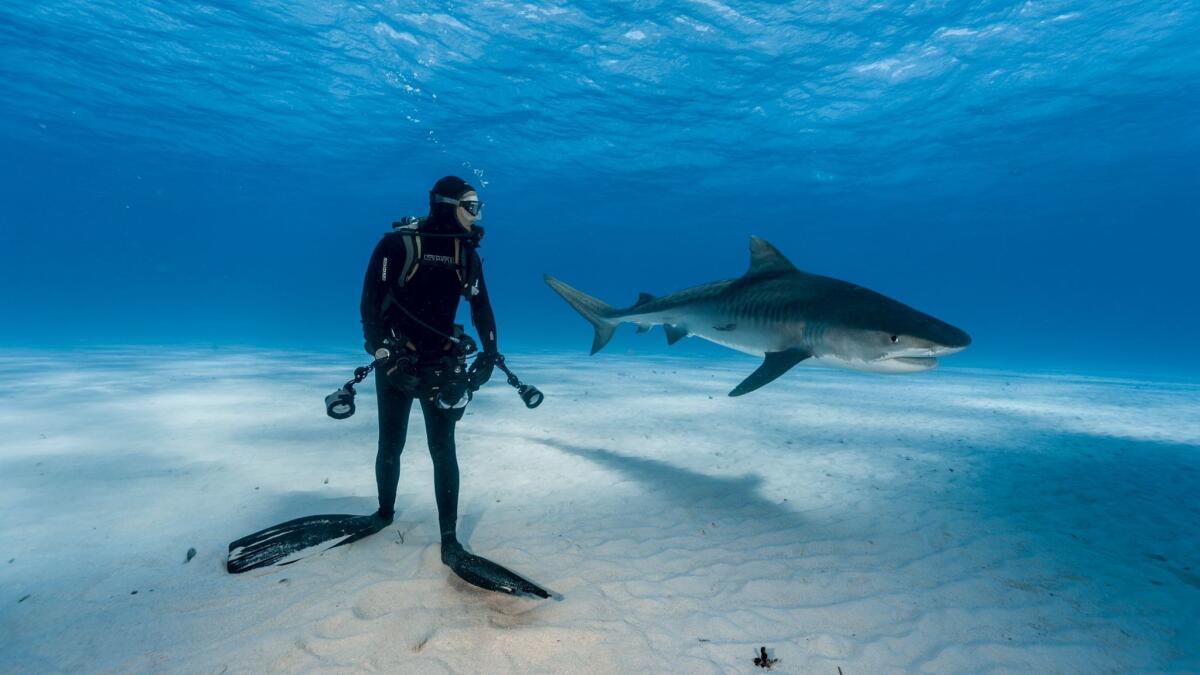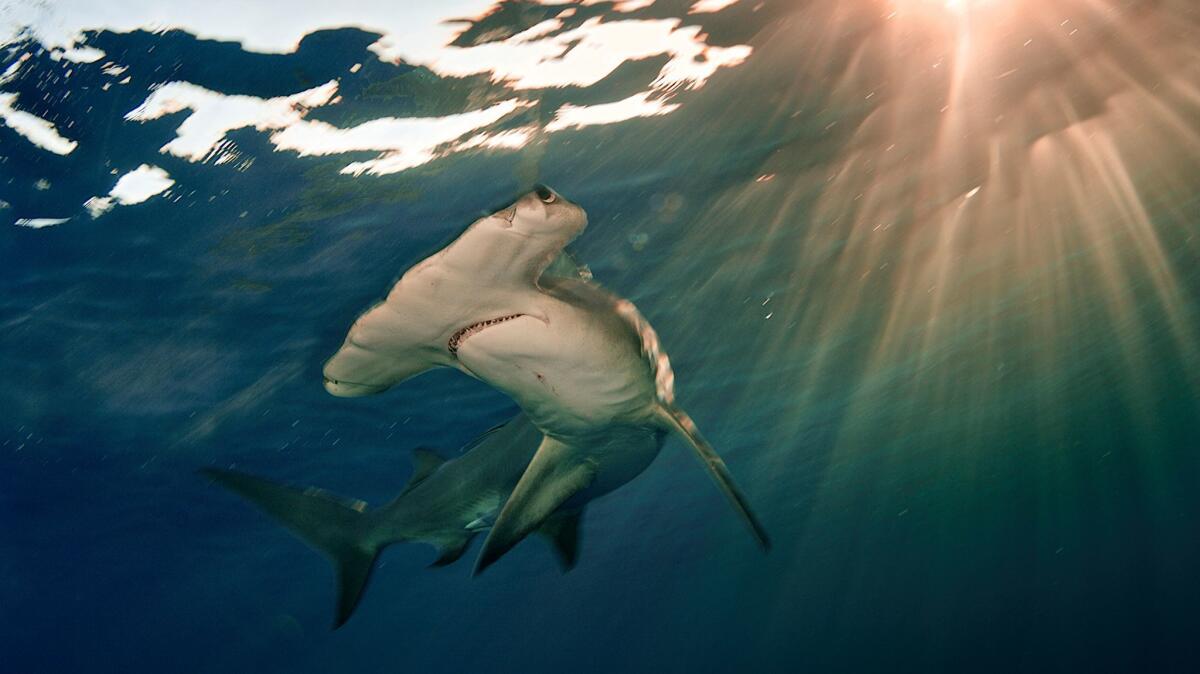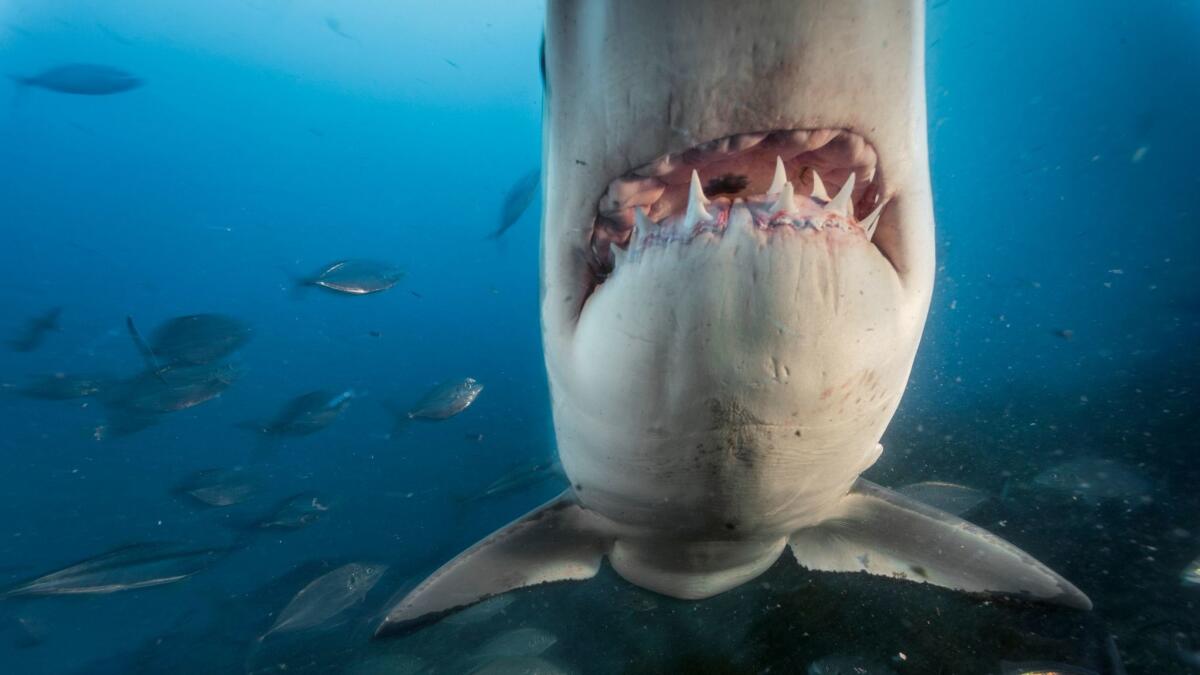Take a look at the best book for Shark Week: ‘Shark’ by Brian Skerry

- Share via
In 1982, while diving off Rhode Island, photographer Brian Skerry met his first shark. “I moved closer,” he writes of that initial encounter, “my primal fears suppressed by my desire for intimacy with this magnificent animal.” Closeness and intimacy might not be everyone’s first instinct when coming face-to-face with a near-mythic predator in the open sea, but then again, humanity’s fascination with sharks endures. The Discovery Channel’s perennially popular “Shark Week” returns July 23 for its 29th year, and Brian Skerry’s new book, “Shark,” from National Geographic, is the perfect companion title — full of stunning underwater photography, fascinating facts and shark-reverant prose.

“I have watched a massive white shark the size of a Porsche deftly navigate a kelp forest and then, with a swish of its giant tail, burst towards the water’s surface, muscularly chasing prey,” he writes.
To Skerry’s eye, the great white is a Porsche, not a monster truck, and in these 250 photographs, collected over 30 years and 10,000 hours in the ocean, his perspective shines through. The shark is a “seductive blend of grace and power,” steely and iridescent, and the book feels about as close as you can get to one without donning a wet suit. Skerry advocates for conservation efforts, noting that 100 million sharks are killed each year. Greater respect for sharks may stem from greater understanding.

There are more than 400 species of sharks. Skerry gets up-close and personal with a few.
Hammerhead shark

Mako shark

Sand tiger shark

Whale shark

Great white shark

From “Shark,” fun facts to know:
- Some sharks can smell prey at one part per 10 billion, which is the equivalent of one drop in an Olympic-sized pool.
- The chances of a surfer being bit by a great white shark off California are one in 17 million.
- The chances for a swimmer are even more rare — one in 738 million.
- White sharks may live to age 70 or older.
- Sharks are private creatures. With the exception of nurse sharks, no one has seen a shark mate or give birth.
- Mako sharks have been clocked moving at speeds of 60 miles per hour. (The headliner for this year’s Shark Week, “Phelps vs. Shark: The Battle for Ocean Supremacy,” asks but one question: Is Michael Phelps faster than a shark? If we’re talking Mako, the answer is no.)
Cover shark

Sign up for our Book Club newsletter
Get the latest news, events and more from the Los Angeles Times Book Club, and help us get L.A. reading and talking.
You may occasionally receive promotional content from the Los Angeles Times.







